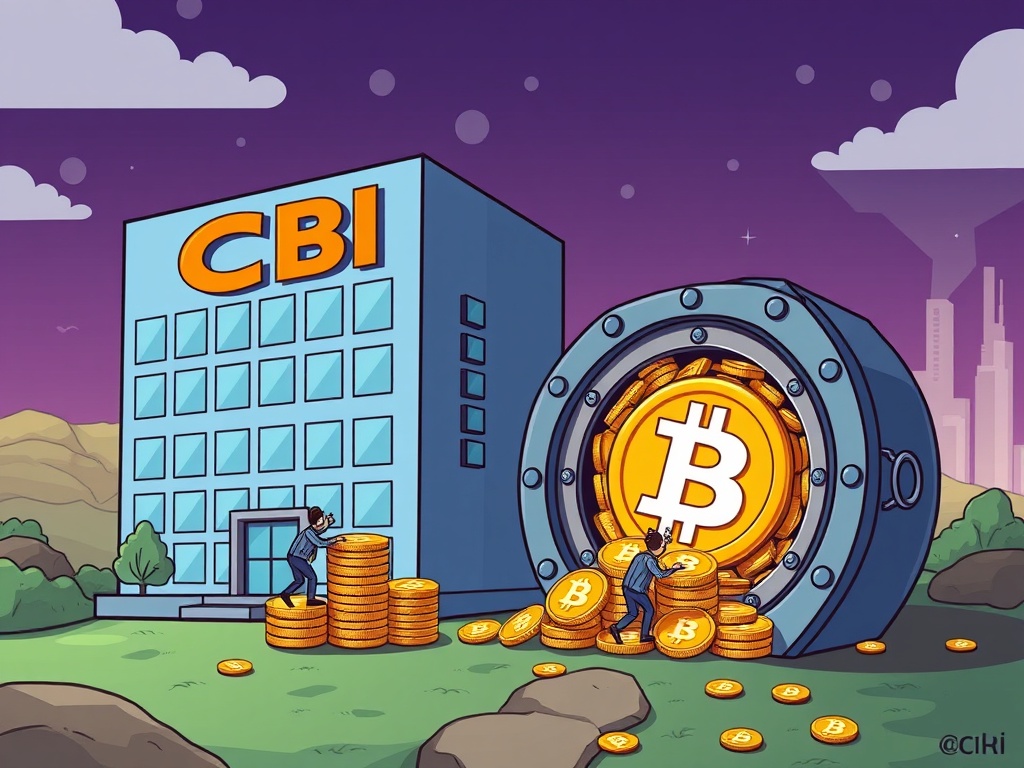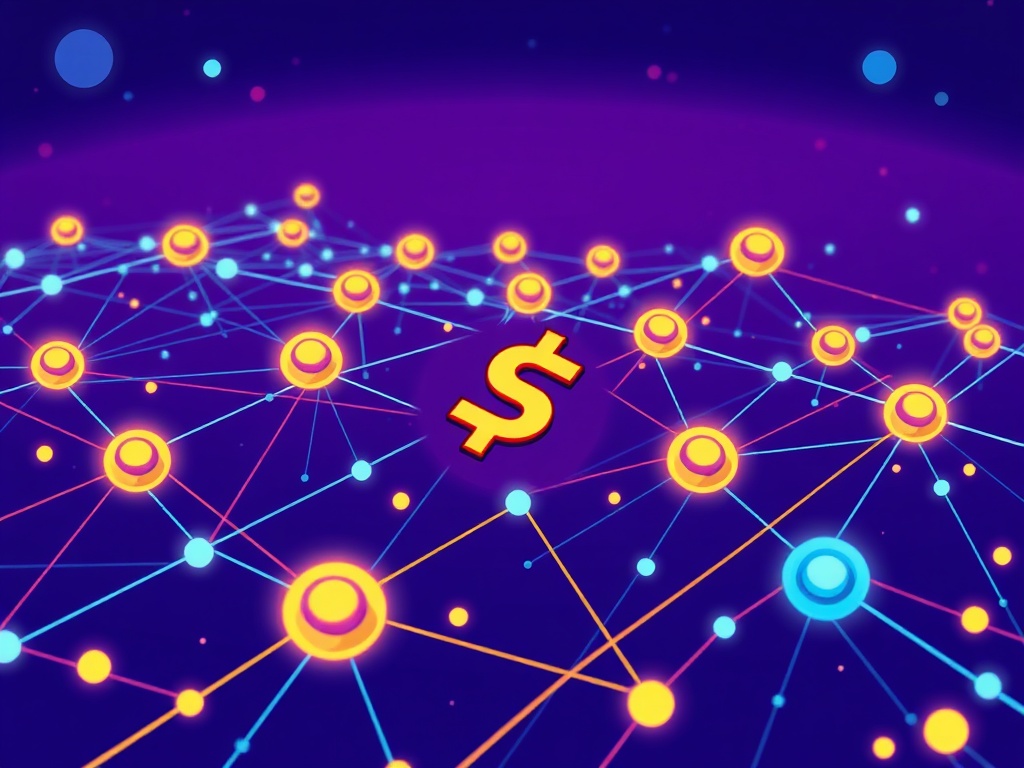BitcoinWorld

Bank Stablecoins: Revolutionizing Finance with $75 Billion Surge on the Horizon
The financial world is abuzz with a significant development that could reshape the future of digital currency. A recent report from Bank of America (BofA) indicates that traditional banks are actively preparing to launch their own bank stablecoins, signaling a potential massive surge in their supply. This isn’t just a ripple; it’s a wave that could see the stablecoin market grow by an astonishing $25 billion to $75 billion in the near term, driven largely by impending regulatory clarity.
Why Are Banks Embracing Bank Stablecoins Now?
For years, the cryptocurrency space has been seen as separate, even adversarial, to traditional finance. However, the utility and stability offered by stablecoins have begun to bridge this divide. Banks are recognizing the immense potential of bank stablecoins to enhance their operations and offer new services. This shift is not merely speculative; it’s a strategic move towards a more efficient and interconnected financial ecosystem.
According to BofA, a key driver behind this impending surge is the anticipated regulatory clarity, particularly from initiatives like the GENIUS Act. This legislative framework is crucial because it provides the legal certainty that financial institutions need to confidently engage with digital assets. Without clear rules, banks face significant compliance risks and operational uncertainties. With a robust regulatory environment, the path for institutional adoption becomes much clearer.
The GENIUS Act: A Catalyst for Bank Stablecoins Adoption?
The GENIUS Act (General National Economic Innovation and Unification Act) is a proposed piece of legislation aimed at providing a comprehensive framework for digital assets in the United States. While still in discussion, its potential impact on the stablecoin market, and particularly on the adoption of bank stablecoins, cannot be overstated. Here’s why it’s so critical:
- Regulatory Certainty: It aims to define stablecoins and their issuers, clarifying who regulates them and under what conditions. This removes much of the ambiguity that has deterred banks.
- Consumer Protection: By establishing guidelines for reserves and redemption, it seeks to protect users and ensure the stability of stablecoins, building trust in the system.
- Innovation: A clear regulatory path encourages financial institutions to innovate and develop new products and services around digital assets, including their own branded stablecoins.
- Interoperability: It could foster an environment where different stablecoin initiatives can interact, leading to a more fluid and efficient digital economy.
The clarity provided by such legislation is paramount for large, regulated entities like banks, which operate under strict compliance requirements. It transforms stablecoins from a fringe asset into a legitimate tool for mainstream financial operations.
What Does a $75 Billion Surge in Bank Stablecoins Mean for the Market?
A potential increase of $25 billion to $75 billion in stablecoin supply is substantial. To put this into perspective, the total market capitalization of all stablecoins is already in the hundreds of billions. Such an influx from traditional banks would significantly alter the landscape. It suggests a new era where stablecoins are not just issued by crypto-native firms but become a core offering from established financial institutions.
This growth is not just about quantity; it’s about quality and purpose. Bank stablecoins are expected to be consortium-led launches, meaning multiple banks could collaborate to issue and manage these digital assets. This collaborative approach can lead to:
- Enhanced Trust: Backed by reputable financial institutions, these stablecoins could enjoy a higher level of trust from both institutional and retail users.
- Greater Liquidity: With multiple banks participating, the liquidity of these stablecoins would likely be significantly higher, making them more practical for large-scale transactions.
- Standardization: Consortiums can help establish industry standards for issuance, redemption, and interoperability, leading to a more cohesive stablecoin ecosystem.
- Broader Adoption: Leveraging existing banking infrastructure, these stablecoins could reach a much wider audience, integrating seamlessly into traditional financial services.
The Treasury Connection: How Bank Stablecoins Could Boost Demand for U.S. Treasuries
One fascinating aspect of BofA’s report is the potential impact of bank stablecoins on the demand for short-term U.S. Treasuries. This connection stems from how stablecoins are typically backed. To maintain their peg to the U.S. dollar, stablecoin issuers often hold reserves in highly liquid, low-risk assets. For many, U.S. Treasuries are the preferred choice due to their safety and liquidity.
If banks launch their own stablecoins, they will also need to hold corresponding reserves. Given their conservative nature and regulatory obligations, it is highly probable that a significant portion of these reserves would be held in short-term U.S. Treasury bills. This increased demand could have several implications:
- Support for Treasury Auctions: Higher demand from stablecoin issuers could provide consistent support for U.S. Treasury auctions, potentially influencing yields.
- Increased Stability for Stablecoins: Backing stablecoins with highly liquid and secure government debt enhances their stability and trustworthiness, which is crucial for their widespread adoption.
- Integration of Crypto and Traditional Finance: This creates a direct financial link between the burgeoning digital asset market and the traditional sovereign debt market, further intertwining the two.
This dynamic illustrates how the growth of digital assets is not occurring in a vacuum but is increasingly intersecting with and influencing established financial markets.
What Challenges Might Bank Stablecoins Face?
While the outlook is largely positive, the journey for bank stablecoins is not without its hurdles. Several challenges need to be addressed for their successful integration and widespread adoption:
- Regulatory Nuances: Even with overarching legislation, specific rules regarding cross-border transactions, privacy, and anti-money laundering (AML) will need careful navigation.
- Technological Integration: Banks operate on complex, often legacy, IT systems. Integrating blockchain technology and managing digital asset infrastructure at scale presents significant technical challenges.
- Competition: The stablecoin market is already competitive, with established players like Tether (USDT) and Circle (USDC). Bank-issued stablecoins will need to differentiate themselves and offer compelling value propositions.
- Public Perception and Trust: While banks bring inherent trust, educating the public and overcoming any lingering skepticism about digital currencies will be essential.
- Interoperability: Ensuring that different bank-issued stablecoins can seamlessly interact with each other and with existing financial systems is crucial for efficiency.
Addressing these challenges will require continuous collaboration between regulators, financial institutions, and technology providers.
Actionable Insights: What This Means for You
The rise of bank stablecoins has implications for various stakeholders:
- For Investors: Keep an eye on the stablecoin market. The entry of banks could bring more stability and potentially new investment opportunities in digital asset products. Understand the backing of different stablecoins.
- For Businesses: Explore how bank-issued stablecoins could streamline payments, improve treasury management, and facilitate faster cross-border transactions. This could significantly reduce operational costs and improve efficiency.
- For Policymakers: The need for clear, adaptive, and comprehensive regulatory frameworks is more urgent than ever to foster innovation while ensuring financial stability and consumer protection.
- For Financial Institutions: It’s time to seriously evaluate or accelerate your digital asset strategy. Partnering with fintechs or joining consortia could be key to staying competitive.
The Future is Digital: A Compelling Summary
The Bank of America’s report paints a clear picture: bank stablecoins are not just a possibility; they are rapidly becoming a reality. Driven by the promise of regulatory clarity from acts like the GENIUS Act and the strategic advantages of consortium-led launches, the stablecoin supply is poised for significant growth. This evolution promises to boost demand for short-term U.S. Treasuries, further intertwining the digital and traditional financial worlds.
While challenges remain, the benefits of increased efficiency, enhanced trust, and broader financial inclusion are compelling. The financial landscape is on the cusp of a profound transformation, with stablecoins at its heart, ushering in an era where digital assets are integral to everyday banking and global commerce. The future of finance is undoubtedly digital, and bank stablecoins are set to play a pivotal role in shaping it.
Frequently Asked Questions (FAQs)
1. What exactly are bank stablecoins?
Bank stablecoins are digital currencies issued by regulated financial institutions, typically pegged 1:1 to a stable asset like the U.S. dollar. Unlike decentralized stablecoins, they leverage existing banking infrastructure and are designed to meet stringent regulatory and compliance standards.
2. How will the GENIUS Act impact stablecoin adoption by banks?
The GENIUS Act, or similar regulatory frameworks, aims to provide legal and operational clarity for digital assets. For banks, this means a clear understanding of how to issue, manage, and transact with stablecoins, significantly reducing regulatory uncertainty and compliance risks, thus accelerating adoption.
3. What is the projected growth for stablecoin supply according to BofA?
Bank of America projects that the stablecoin supply could increase by $25 billion to $75 billion in the near term, primarily driven by regulatory clarity and the entry of traditional banks into the stablecoin market.
4. How might bank stablecoins affect demand for U.S. Treasuries?
As banks issue stablecoins, they will need to hold reserves to back them. A significant portion of these reserves is expected to be held in highly liquid, short-term U.S. Treasuries, leading to an increased demand for these government securities.
5. What are the main benefits of stablecoins for traditional banks?
The main benefits include improved payment efficiency, faster cross-border settlements, reduced operational costs, the ability to offer new digital asset services to clients, and enhanced liquidity management within their systems.
6. Are bank stablecoins different from other stablecoins like USDT or USDC?
While all are pegged to a fiat currency, bank stablecoins are issued directly by regulated banks, potentially offering a higher degree of trust and regulatory compliance within traditional financial frameworks compared to stablecoins issued by non-bank entities, though USDT and USDC are also widely used and regulated in various capacities.
If you found this article insightful, please consider sharing it with your network on social media! Your support helps us continue to provide valuable insights into the evolving world of digital finance.
To learn more about the latest crypto market trends, explore our article on key developments shaping stablecoins institutional adoption.
This post Bank Stablecoins: Revolutionizing Finance with $75 Billion Surge on the Horizon first appeared on BitcoinWorld and is written by Editorial Team





